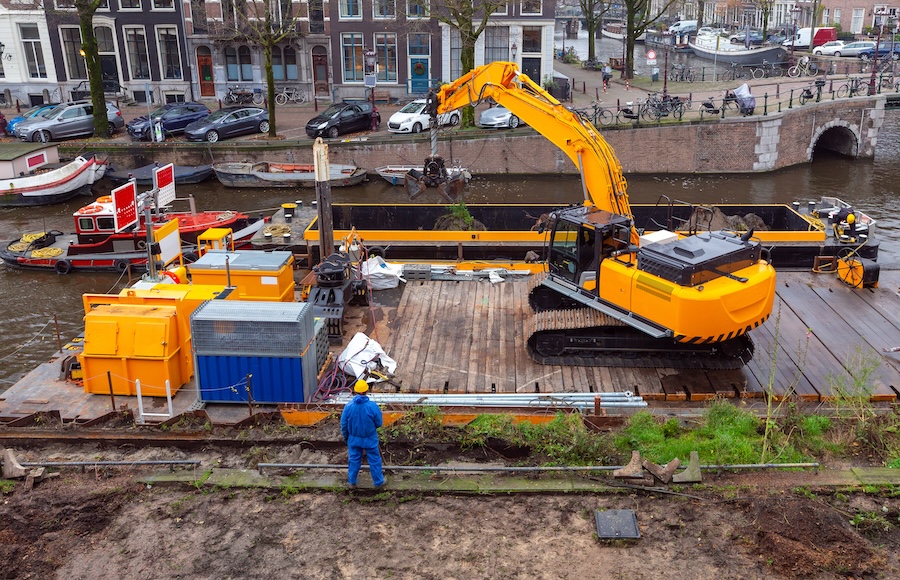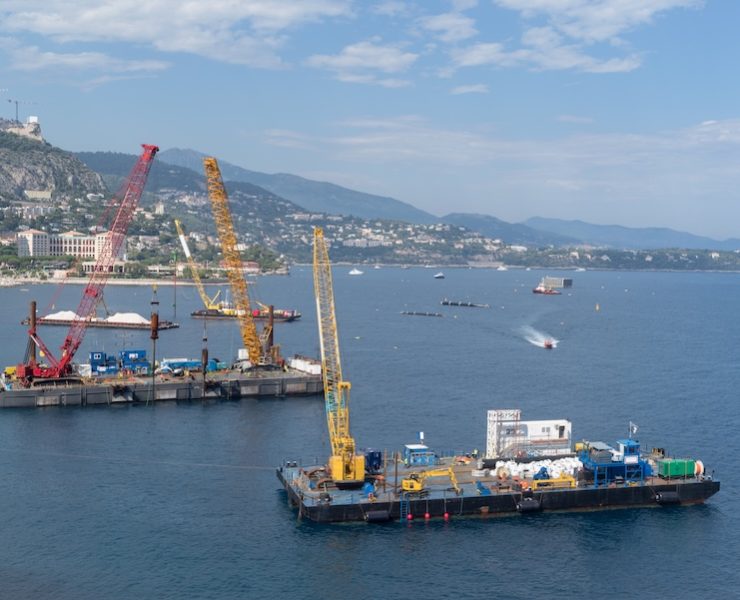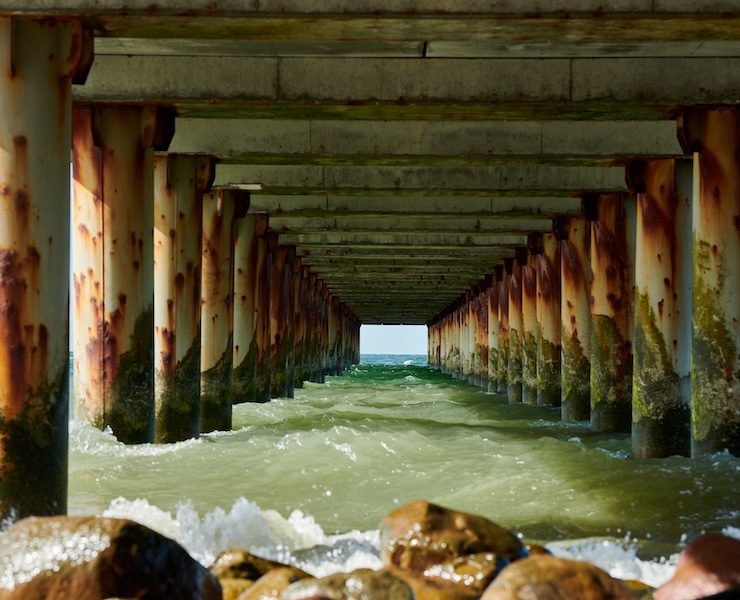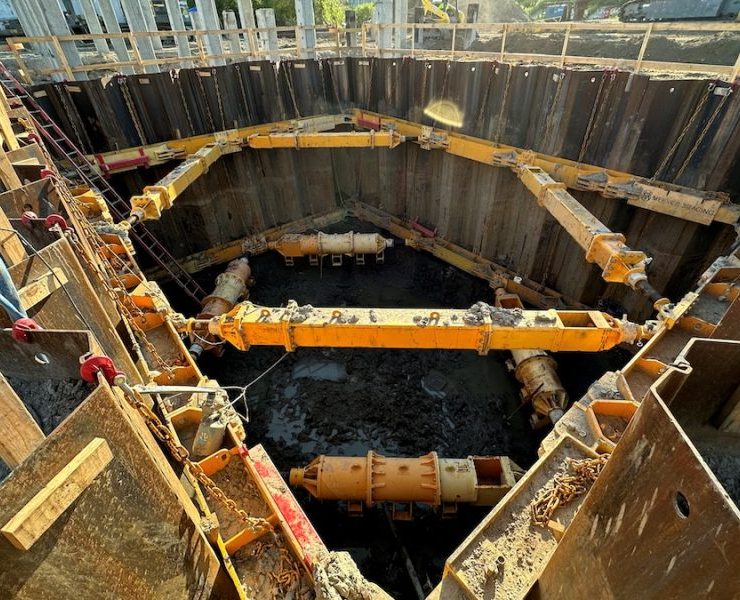15 Essential Tips for Working with Barges
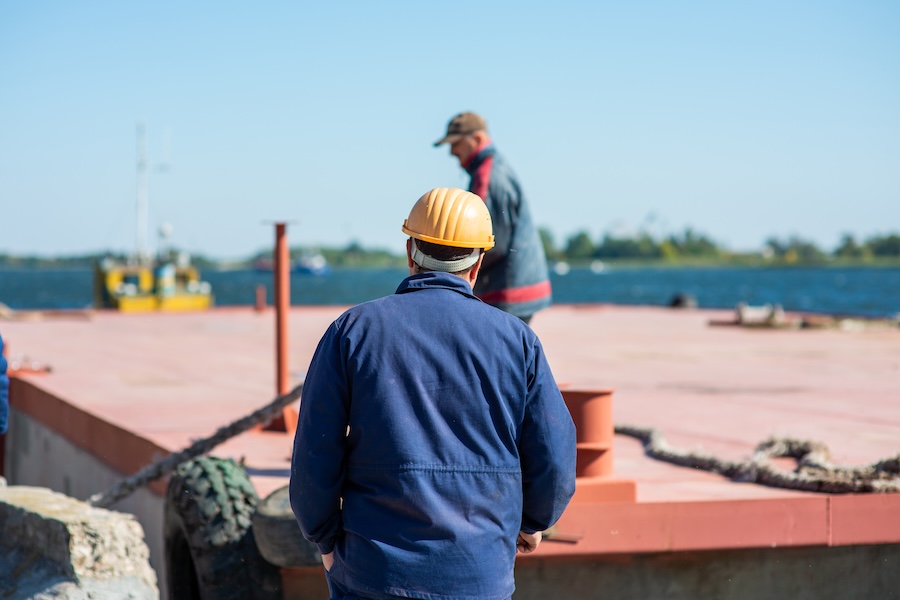

View the complete article here.
Barges are indispensable in marine construction, providing floating platforms for everything from pile driving to dredging and material transport. Effective use of barges requires attention to detail in areas such as load management, safety, and environmental regulations. To help marine contractors maximize the performance and safety of their barge operations, we’ve compiled 15 essential tips…
1. Plan Barge Placement Based on Water Depth and Access
Before positioning your barge—carefully assess the water depth, current, and access to the worksite. A barge placed in too shallow water may become grounded—and one positioned too far from the work zone increases travel time, reducing efficiency. Consider tide schedules and potential obstructions like rocks or debris. Also—ensure the barge can be accessed easily by equipment such as cranes, dredges, or other machinery.
2. Optimize Load Distribution
Uneven load distribution is one of the most common causes of barge instability, potentially leading to capsizing. To avoid this, divide the weight of materials and equipment evenly across the deck. Use a load plan that factors in both lateral and longitudinal balance, and monitor the barge’s draft continuously as the load changes to ensure you remain within safe limits. This is especially critical when using cranes on the barge, where shifts in the center of gravity can cause listing.
3. Perform Routine Deck and Hull Inspections
Marine environments are harsh, and equipment can deteriorate quickly. Regularly inspect the deck for signs of corrosion, rust, and wear on critical fittings like mooring cleats, bollards, and winches. Below the waterline—inspect the hull for cracks, damage, or marine growth—all of which can reduce buoyancy and increase drag, impacting performance.
4. Monitor Weather, Currents, and Tides Continuously
Weather and sea conditions can change rapidly, impacting barge stability. Heavy winds, storm surges, and rough seas increase the risk of accidents—especially when working with cranes or transporting heavy materials. Install real-time monitoring systems for tides and currents and have contingency plans ready for bad weather. Set up clear protocols for securing the barge and evacuating personnel if necessary.
5. Ensure Proper Securing of Deck Cargo and Equipment
Improperly secured equipment on the deck can turn into dangerous projectiles in rough waters. Use marine-grade straps, chains, and lashing to tie down cargo and machinery. Additionally, verify that lashing points on the barge are structurally sound and rated for the load they’re holding. In high winds or choppy seas, unsecured materials can shift—causing balance issues or even knocking crew members overboard.
6. Use Redundant Anchoring Systems
When anchoring your barge, especially in tidal waters or strong currents, a single anchor may not suffice. Use a multi-anchor system to secure the barge in position. Consider the type of seabed when choosing anchors—sandy or silty seabeds may require heavier or specialized anchors to hold. Redundant anchoring provides additional security and ensures that the barge remains in position even if one anchor line fails.
7. Maintain Clear Deck Space and Minimize Clutter
A cluttered deck is a safety hazard. Keep your barge deck organized—with dedicated storage areas for tools, materials, and equipment. Remove trip hazards and ensure walkways are clear. Having a clean deck also improves workflow, allowing workers to move freely and reducing the chance of accidents involving moving machinery or equipment.
8. Train Crew on Specialized Barge Safety and Operations
Working on a barge presents unique safety challenges. All crew members should be trained in barge-specific protocols—including emergency procedures for grounding, man-overboard scenarios, and dealing with spills. Barge operations require familiarity with both waterborne hazards and construction-specific risks, so training must be comprehensive and frequent—especially with new hires or seasonal workers.
9. Establish Reliable Communication Channels Between Barge and Shore
Clear, uninterrupted communication between the barge and shore is critical for coordination and safety. Equip the barge with reliable radios, and ensure that all personnel are familiar with communication protocols. Poor communication can lead to missteps, whether it’s related to timing deliveries of materials or responding to emergencies. In high-traffic areas, communication with nearby vessels is equally important to avoid collisions.
10. Regularly Monitor and Adjust Barge Draft
The draft of your barge, the depth of the hull submerged underwater, affects stability and load capacity. Monitor the draft regularly, especially when loading and unloading, to ensure the barge remains within its safe operational limits. Overloading the barge can cause it to take on water or compromise freeboard, making it vulnerable to waves or swamping.
11. Comply with Environmental and Marine Regulations
Barges operate in fragile marine ecosystems, and contractors must comply with environmental regulations to minimize harm. This includes managing waste properly, using eco-friendly fuels, and ensuring that fuel spills or debris do not contaminate the water. Familiarize yourself with both local and national environmental guidelines, especially in protected waters or near marine sanctuaries, to avoid fines or project shutdowns.
12. Adapt Modular or Sectional Barges for Tight Spaces
When working in confined or hard-to-reach areas, sectional barges offer a versatile solution. These barges can be assembled and disassembled on-site, making them ideal for projects with space constraints. However, it’s essential to ensure that all sections are properly connected and sealed to prevent water ingress. The modular nature of sectional barges also allows for custom configurations, but this flexibility requires thorough planning to ensure stability and balance during operations.
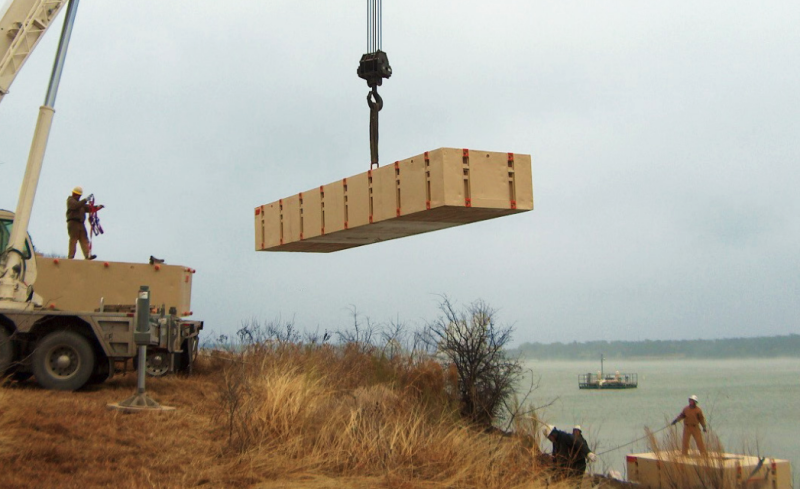
13. Utilize Advanced Navigation and Positioning Systems
Today’s marine construction projects benefit from advanced GPS and positioning systems to guide barge movement and ensure precision in operations like pile driving or dredging. Equip your barge with GPS tracking and depth sounders to navigate safely and position the barge with millimeter accuracy. This is especially important when operating close to other vessels or in crowded waterways.
14. Schedule Regular Maintenance and Preventive Repairs
Barge downtime can be costly, so preventive maintenance is critical. Establish a routine inspection schedule that includes checking for rust, wear on moving parts, engine performance, and hull integrity. Performing regular maintenance will extend the life of your barge and avoid unplanned outages. Keep a maintenance log to track repairs and inspections, ensuring that no critical component is overlooked.
15. Deploy Safe Mooring and Unmooring Practices
Mooring and unmooring a barge can be hazardous, especially in high winds or strong currents. Use sufficient mooring lines and ensure they are made from durable, marine-grade materials. Before releasing or securing lines, ensure all personnel are clear of potential hazards. When mooring, assess the strength of mooring points on both the barge and the dock to avoid accidents caused by mooring line failure.
View the complete article here.
Why is proper load distribution important on a barge?
Uneven load distribution can cause barge instability, potentially leading to capsizing.
How can barge operations comply with environmental regulations?
By managing waste, using eco-friendly fuels, and preventing spills or debris contamination in the water.














